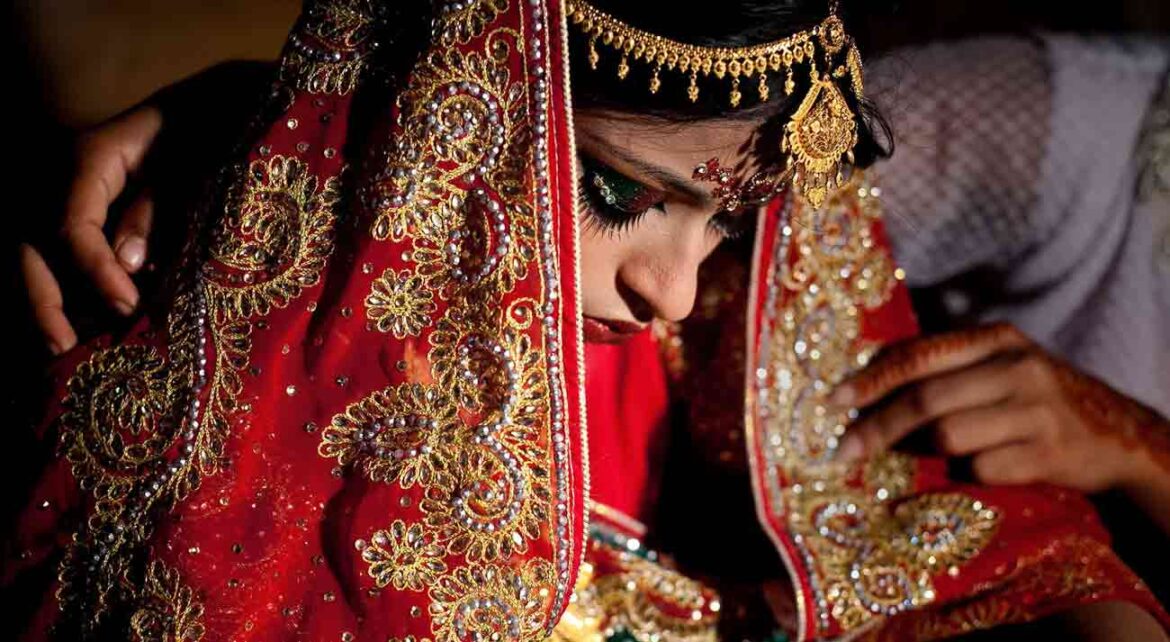Seema, a resident of Astore District of Gilgit-Baltistan, received the title, ‘Woman of the Year’, not for her achievements, but for a fate imposed upon her at a tender age: child marriage. One can’t help but wonder how entering into a marriage contract at a tender age warrants this title.
Visibly upset, Seema recounted her story, explaining why she received the honour. Married at the tender age of 13 and diagnosed with vaginal fistula when she was 16 years old, Seema’s existence has since become synonymous with agony.
Every villager, out of pity for her deteriorating health, would visit her, oblivious to the struggle she bore in silence. With no funds for treatment, her father-in-law had even asked the doctor to give her poison — a desperate plea for relief.Before delving further into Seema’s story, it is important to understand what vaginal fistula is.
The condition occurs when an abnormal passage is created between the vagina and neighbouring pelvic organs like the bladder or rectum. This can lead to numerous complications, including urinary and faecal leakage, abnormal vaginal discharge, tissue damage, kidney infections, and various other symptoms. Doctors warn that untreated fistulas can escalate to reproductive system cancers, potentially even leading to death.
Seema described the pain to be so agonising that she wished for a quick death on several occasions. It’s a stark contrast to the dreams that typically fill the heart of a 16-year-old girl — dreams of a future adorned with aspirations and possibilities. However, Seema found herself teetering on the precipice of despair, grappling with the grim reality of her life-long disease.
It only makes sense for her to be called the ‘Woman of the Year,’ doesn’t it? Her journey isn’t merely reflective of the far-reaching consequences of fistula but is also a testament to the devastating consequences of child marriage.
According to a Unicef report an estimated 18 per cent of young girls are wed before reaching adulthood [18 years of age], amounting to almost 19 million child brides in the country. The number of unreported instances is believed to be even higher.
As per the National Commission on the Rights of Child (NCRC), Pakistan has the sixth highest number of women married before the age of 18 in the world.
The adverse impacts of early marriage are manifold, encompassing the deteriorating health of the young bride, high-risk pregnancy, and impediments to both her education and personal growth. Moreover, in developing countries such as Pakistan, the unregulated cycle of childbirth places a heavy financial strain on parents, as they struggle to support multiple children, ultimately perpetuating poverty within these families.
Despite tireless global campaigns and legal enforcement in these countries, the insidious practice of child marriage persists. This prevalence is fuelled by a glaring lack of awareness regarding the severe repercussions of such unions, amplifying the issue.
The plight of girls under 18 is particularly dire, as depicted in Seema’s case. Her story serves as a stark reminder of the health complications faced by these young brides face. From debilitating conditions like fistula to a myriad of other ailments, many women are condemned to a lifetime of anguish. While some manage to recover through treatment, others suffer without ever experiencing improvement in their health.
Dr Sajjad Ahmed, who offers free treatment to patients at Koohi Goth Hospital in Karachi, said that a significant number of women travel long distances from remote areas to seek treatment at the hospital located in the port city’s Bin Qasim Town. This reality underscores the inadequacy of basic facilities accessible to women in Pakistan.
At the other end of the country, Dr Sher Shah and his dedicated team annually organise medical camps in Gilgit, offering treatment and performing surgeries for fistula patients free of cost. While minor cases receive care at City Hospital Gilgit, those requiring more intensive procedures are referred to Koohi Goth Hospital in Karachi.
Dr Sher Shah mentioned how the hospital serves patients not only from across the country but also extends care to individuals from Afghanistan, Iran, Sharjah, and Yemen. Drawing patients from the farthest corners of Sindh, Punjab, Chitral, and Gilgit-Baltistan, including the remote locales of Skardu, Diamir, and Ghizar, individuals recover under their expertise. The hospital has provided free surgeries to almost 40 patients from Gilgit-Baltistan alone.
Despite the invaluable services rendered, the absence of more specialised hospitals for the condition remains a gap in the country’s healthcare infrastructure, he added.
Dr NazneenZamir Farooqi, a gynaecologist at City Hospital Gilgit, gets patients from remote areas of Gilgit-Baltistan, including Diamer, Astor, Skardu, Kharmang, Darel, and Ghizar. In many of these regions, the scarcity of healthcare facilities and the absence of skilled attendants during childbirth worsen the problem.
“The pervasive practice of child marriage significantly contributes to this crisis. When young girls are married off, their bodies are ill-equipped for childbirth — a biological reality — as physical maturity is typically achieved post-puberty,” she explained. Consequently, girls under 18 years face heightened risks of complications, and if they contract fistula, their suffering is only magnified.
Throughout pregnancy and childbirth, the absence of adequate treatment can result in a spectrum of deformities in women’s bodies, often leading to the onset of debilitating diseases. Among these, fistula stands out as one of the most distressing, inflicting not only physical discomfort but also profound psychological and social ramifications.
Girls married off at a young age have underdeveloped bodies and fragile bones. If they undergo childbirth before their bodies have fully matured, they are at risk of developing fistula. Similarly, older women who have borne numerous children may experience weakened muscles, rendering them incapable of delivering the baby during childbirth. In some cases, it may also lead them to develop this condition.


